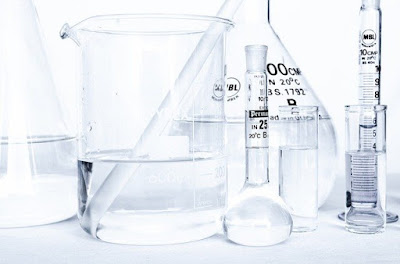Introduction:
Textile fibers both natural and man-made such as cotton,
silk, rayon, polyester, wool etc have wide range of area of application, from
apparel to technical fields. Since the last decade new fibers are emerging in
the textile domain. The modifications and development of the existing ones
makes the identification of the fiber more difficult. The identification of
common fibers is comparatively easy as they have diverse physical and chemical
properties.
To identify the
fibers different types of tests are performed such as solubility, burning test,
staining test, and swelling test, microscopical tests, etc. In this article, the identification of fibers by burning test, solubility test and microscopical tests
are taken for discussion.
Microscopical Test:
- Identification of fibers by this test is the most reliable method and it can be used to distinguish the fibers.
- This method of testing gives quick, accurate results and is easy to perform for identification.
- Even the yarns containing fiber ends can also be easily tested by the methods.
- The major advantage of this method is that the test can be performed even if the sample size available is small.
- The tests denote the cross-sectional and longitudinal view of the fibers.
- For example, cotton has a cross-sectional view of a bean shaped whereas; the longitudinal view is a spirally twisted tube with a rough surface.
Burning Test:
- This is the simplest test of all and the fiber is identified by noting the odor, residue, or how the fiber approaches the flame, every fiber behaves differently.
- In this test, a bundle of fiber is ignited at one end and the smell, color, and shape of ash or bead are noted.
- Further, other characteristics such as burning slowly or rapidly, melting or not melting, etc., are also observed.
- For example, cotton fibers when burned give the smell of burning papers, similarly acetate, silk, wool, and viscose give a smell like burned hair. Nylon gives slight sweetish and polyester-like vinegar.
Solubility and swelling Tests:
- The chemical difference that exists between the textile fibers, the solubility helps to distinguish them in a better way than the burning characteristics.
- Testing by solvents is very effective when it is used as a technique for eliminating and cross-checking. In order to achieve accurate results the fabrics to be tested should be cleaned and the finishing agents should be removed.
- The fabric should be unraveled, yarns untwisted and the fiber put in as loose a form as possible. Strong sodium hydroxide solution destroys animal fibers such as silk and wool. But when treated with cold concentrated hydrochloric acid for 15 minutes, silk fibers dissolve but wool fiber does not dissolve.
- Dilute acids dissolve vegetable fibers, a 2% solution of sulphuric acid may be used to distinguish vegetable fibers.
- Polyester fibers are soluble in hot meta-cresol. Polyacrylonitrile fibers dissolve in dimethyl formamide.
- Acetate rayon dissolves in 50% solution of acetic acid but viscose is not affected. All rayon will dissolve in 60% solution of sulphuric acid or a concentrated solution of hydrochloric acid.
- If the sample containing acetate and nylon is immersed in an 80% solution of acetone, the acetate fibers will dissolve but the nylon will not.
- But nylon is soluble in 85% formic acid or 90% phenol or meta-cresol.
- By selecting suitable solvents, these fibers can be easily distinguished from each other.






2 Comments
I want to know which solvent destroyed which fibre ?
ReplyDeleteThis comment has been removed by the author.
ReplyDelete